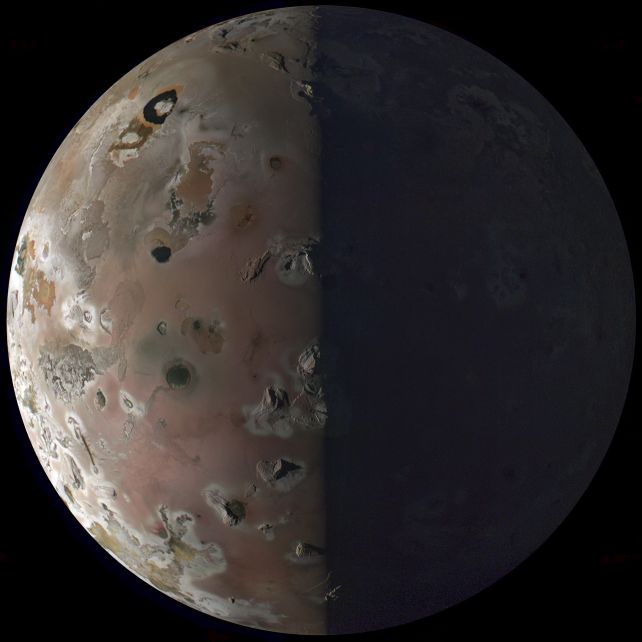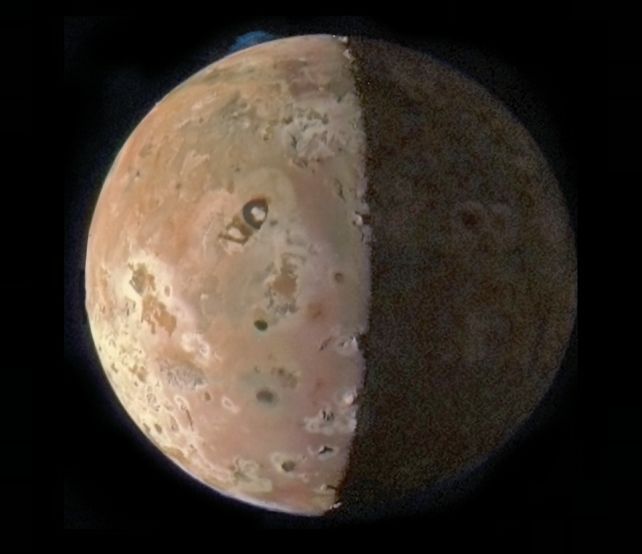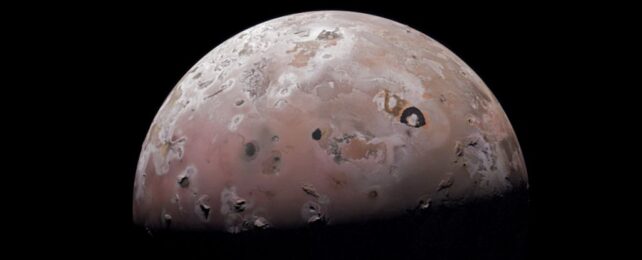The most volcanic object in the Solar System has just been unveiled in new, glorious detail.
On 30 December 2023, Jupiter probe Juno conducted its closest flyby of Io yet, snapping some incredible pics in the process. In them, Jupiter's moon seems to gleam with sickly, sulfurous hues, its surface mottled with features created by the ongoing volcanic activity that roils therein.
Juno's flyby was the closest any probe has approached Io in decades, swooping within just 1,500 kilometers (930 miles) of the moon's surface. The aim, scientists say, is to better understand the peculiarities of this alien world.
"By combining data from this flyby with our previous observations, the Juno science team is studying how Io's volcanoes vary," says astronomer Scott Bolton of the Southwest Research Institute.
"We are looking for how often they erupt, how bright and hot they are, how the shape of the lava flow changes, and how Io's activity is connected to the flow of charged particles in Jupiter's magnetosphere."

Io is not an enormous moon, being only slightly bigger than the one that orbits our own planet.
But where Earth's Moon doesn't seem to have a lot going on, Io is a literal hot mess. Its orbit around Jupiter is elliptical; the changing gravitational tug of the planet exerts stresses on the moon's interior that generate enormous amounts of heat, keeping it gooey and prone to eruptions.
The other Galilean moons also tug on Io; the result is rampant, fiery volcanism. There are around 400 active volcanoes on Io, around 150 of which are erupting at any given time. The volcanic gasses constantly being vented don't stay around Io, but are pulled out into a torus of plasma that girdle Jupiter, feeding down its magnetic field lines to generate powerful, permanent aurorae at the planet's poles.
Scientists are using Juno to collect data about Io in order to learn more about how it fits into and contributes to the complicated system of Jupiter and its moons – and about the moon itself. There's a lot going on inside it that we don't fully understand.

"Juno will investigate the source of Io's massive volcanic activity, whether a magma ocean exists underneath its crust, and the importance of tidal forces from Jupiter, which are relentlessly squeezing this tortured moon," Bolton says.
The probe will conduct another close flyby on 3 February 2024, once again zooming within 1,500 kilometers. It's getting while the getting's good; Juno has been operating in Jovian orbit since 2016, and now three years into its mission extension its instruments are showing signs of degradation. The spacecraft will continue to operate through September 2025, or until it breaks down, whichever comes first.
Meanwhile, Juno is still going strong, with plenty more observations in the works, not just of Io, but the other Galilean moons, and, of course, Jupiter itself.
We'll be looking forward to the new images captured during the February flyby; meanwhile, you can find the most recent ones on NASA's Juno mission website.
